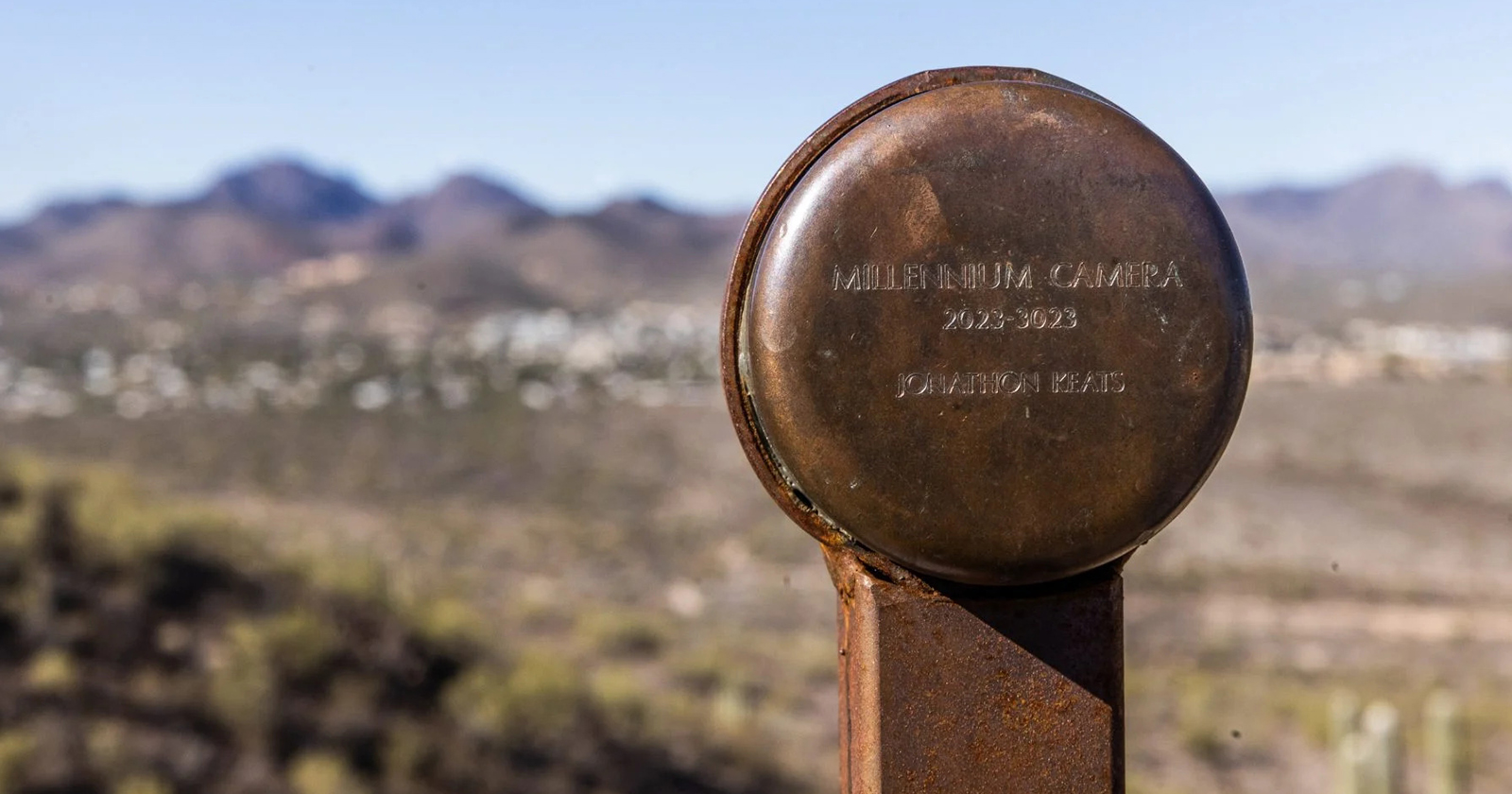In Tucson, Arizona, there is a remarkable project by philosopher Jonathon Keats: The Millennium Camera. This camera will take a photograph only once in its lifetime. However, it will take 1,000 years to prepare this photograph.
The interesting design of the Millennium Camera that freezes time
The project is characterized as a conceptual artwork rather than a traditional camera. The camera is based on the pinhole principle, but this time with an extremely long exposure time.
The outer copper cylinder opens onto a layer of 24-carat gold. Light is allowed to slowly seep through to the surface, which is coated with a special paint pigment, rose dry. It is estimated that in 1,000 years, when people turn on the camera, they will be able to observe every change that has occurred in the photograph over this long period of time.
Keats plans to install cameras in other places, including Chongqing, China. He says this project is feasible in many parts of the world. He says such cameras will lead to a planetary process of reimagining the Earth for future generations.
The camera is mounted on a pole next to a bench. A notice board next to it explains the purpose of the project and invites people to think about the future. The owner of the camera says that most people have a bleak view of what lies ahead.
The mountain range that the camera is looking at will, according to estimates, form the most prominent parts of the final image in 1000 years. Non-permanent features, such as buildings, will look less distinct and ghostly, he says.
However, the camera’s founder warns: “If the camera works…” All these predictions are based on the assumption that the experiment will succeed. But the camera could be destroyed or damaged within 1000 years.














